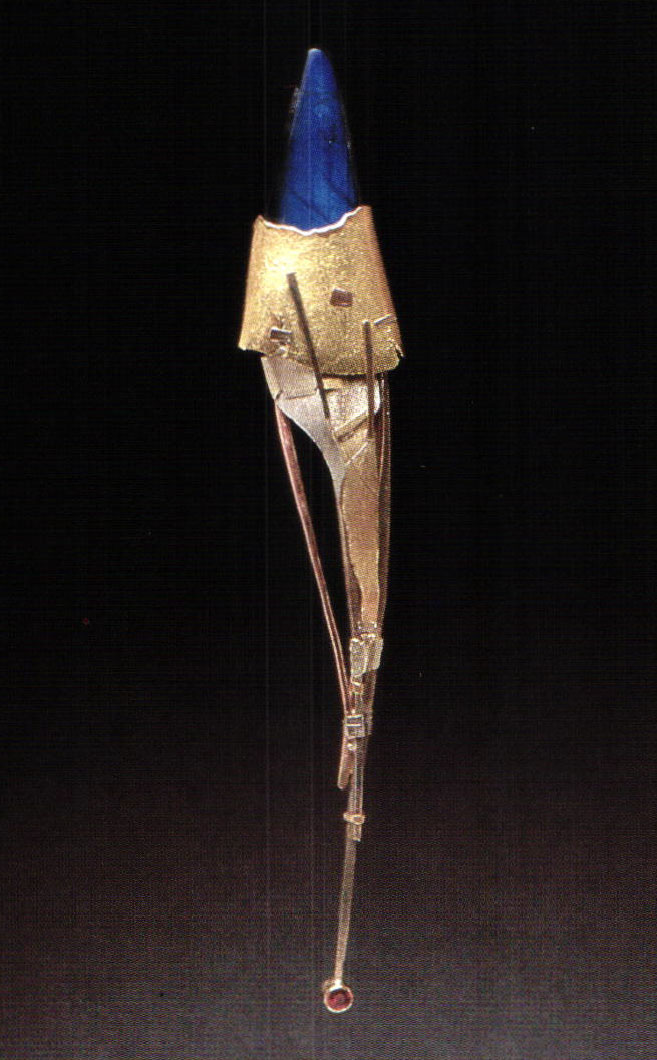Observations: Andrew Cooperman
1 Minute Read
A textured surface is information to Andrew Cooperman. Torn, distressed, and manipulated surfaces that weave a common thread throughout his work translate a deep attraction for the world of insects and chameleons into metaphors for the human eye.
Stretched, broken, wrapped, and banded, with the sense of an interior object barely glimpsed and sometimes barely contained, the cocoon has been a source for the many pieces in the chrysalis series. He also uses highly contrasting stones and non-metal materials as details that accent the tips of tapered, arching forms, or are glimpsed behind wrapped, distressed metal. These details can express the specific qualities of a source for a piece, such as the opals used in the chameleon series to echo the color change that aids this animal's survival.
Cooperman tempers the specific organic source material's impact on his work with an archaeologist's fascination with the construction of things, the marks left behind, and connections which are both physical and implied. He describes surface marks as scars that tell the ". . . .accumulated history of a thing and give it character". Cooperman is a collector of images. Repairs, such as metal bands bolted into two sides of a cracked cement wall are not only visually beautiful, but they furnish information as to the stresses on the wall and the characteristics of cement. They also suggest a relationship of bands of metal to bandages for the body.
Rivets are used extensively and almost always visibly. Unplanned cracks and fissures are often exhibited and they lend a well designed piece the tension of natural beauty. He often fuses together cracked elements and forges the ends into exquisite tapers, moving from crudeness to refinement with highly developed technical skill. For Cooperman the tools he uses and the construction of the tools themselves link his endeavors and his works with previous users and with previous societies.
You assume all responsibility and risk for the use of the safety resources available on or through this web page. The International Gem Society LLC does not assume any liability for the materials, information and opinions provided on, or available through, this web page. No advice or information provided by this website shall create any warranty. Reliance on such advice, information or the content of this web page is solely at your own risk, including without limitation any safety guidelines, resources or precautions, or any other information related to safety that may be available on or through this web page. The International Gem Society LLC disclaims any liability for injury, death or damages resulting from the use thereof.
The All-In-One Jewelry Making Solution At Your Fingertips
When you join the Ganoksin community, you get the tools you need to take your work to the next level.
Trusted Jewelry Making Information & Techniques
Sign up to receive the latest articles, techniques, and inspirations with our free newsletter.
